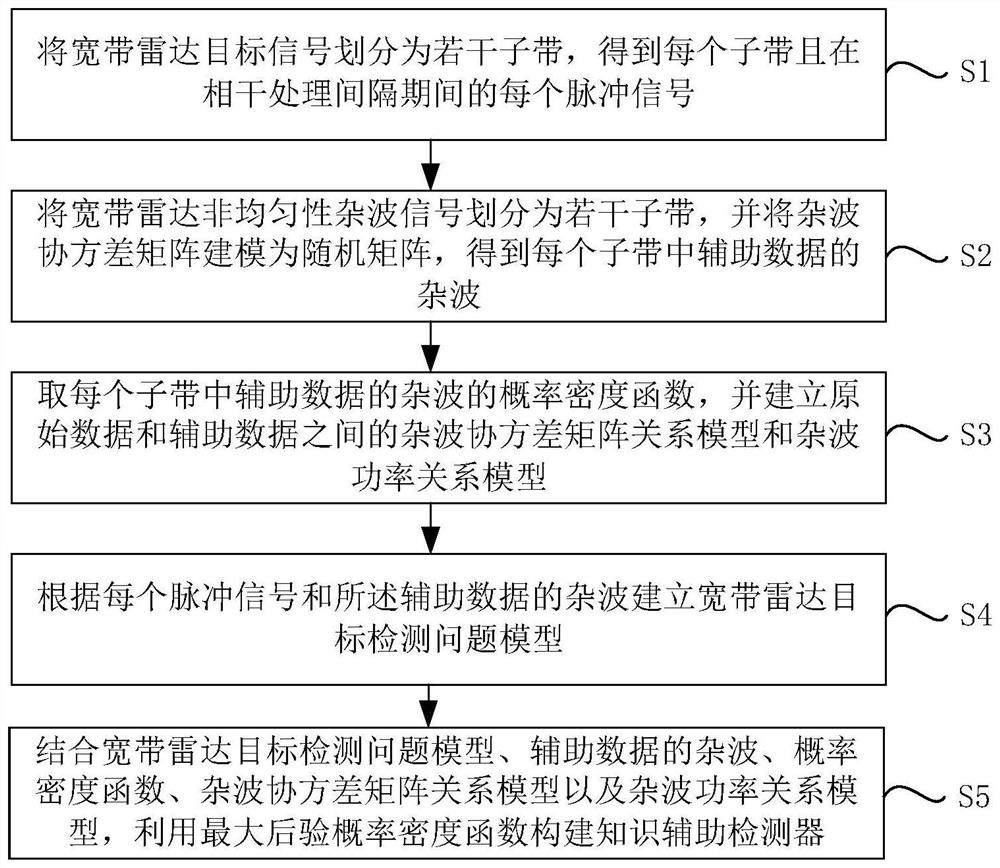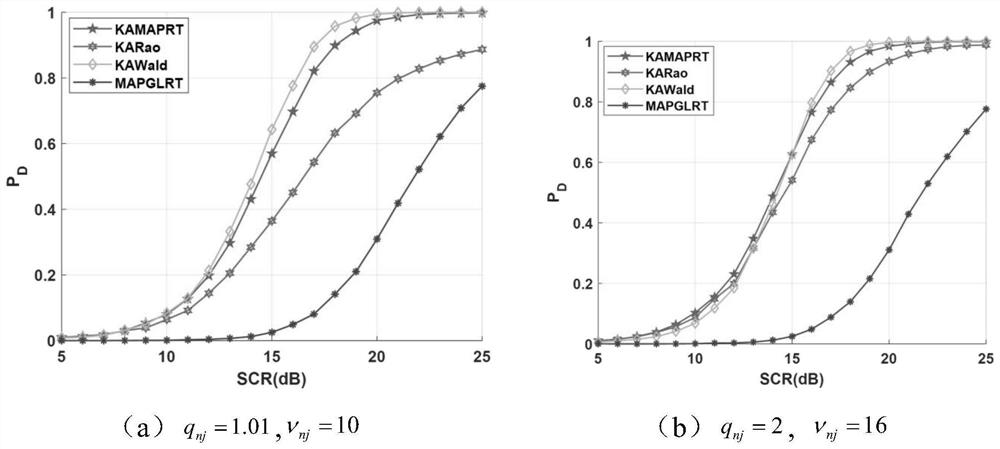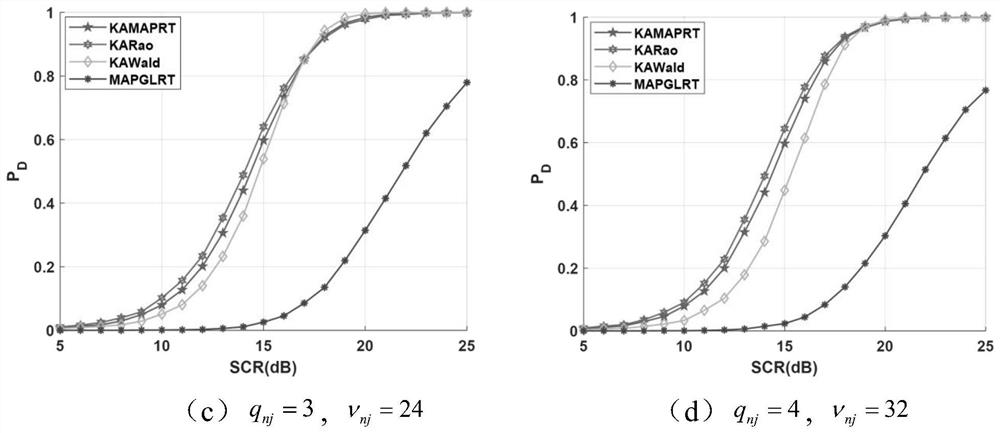Knowledge-assisted broadband radar target detector in non-uniform clutter and design method
A broadband radar and non-uniformity technology, applied in radio wave measurement systems, instruments, etc., to achieve the effect of performance improvement
- Summary
- Abstract
- Description
- Claims
- Application Information
AI Technical Summary
Problems solved by technology
Method used
Image
Examples
Embodiment 1
[0079] This embodiment uses the knowledge-assisted (KA) method to counteract the impact of non-uniformity on the performance of the detector. The knowledge-assisted (KA) method is widely used by utilizing the prior knowledge of the environment from the remote sensing information of the region of interest or the previous scanning data. Most knowledge-aided (KA) methods are based on Bayesian theorem, where the clutter power and clutter covariance matrix are not assumed to be deterministic like in classical methods, but are treated as random variables and random matrices whose The prior distribution integrates prior knowledge of the environment.
[0080] Based on this, this embodiment describes the knowledge-assisted detector design of range-migrating radar targets under the background of broadband radar clutter. The design idea of the knowledge-assisted detector in this embodiment is as follows: first, the target echo and clutter of the broadband radar are divided into several...
Embodiment 2
[0186] The design method includes steps:
[0187] S1. Divide the wideband radar target signal into several subbands, and obtain each pulse signal in each subband during the coherent processing interval, so as to establish a signal model of the wideband radar target.
[0188] S2. Divide the broadband radar non-uniform clutter signal into several sub-bands, model the clutter covariance matrix as a random matrix, and obtain the clutter of auxiliary data in each sub-band to establish a non-uniform clutter model, wherein , the clutter of the auxiliary data obeys a compound Gaussian distribution.
[0189] S3. Obtain the probability density function of the clutter of the auxiliary data in each subband, and establish a clutter covariance matrix relationship model and a clutter power relationship model between the original data and the auxiliary data.
[0190] S4. Establish a wideband radar target detection problem model according to each of the pulse signals and the clutter of the au...
Embodiment 3
[0220] The design method includes steps:
[0221] S1. Divide the wideband radar target signal into several subbands, and obtain each pulse signal in each subband during the coherent processing interval, so as to establish a signal model of the wideband radar target.
[0222] S2. Divide the broadband radar non-uniform clutter signal into several sub-bands, model the clutter covariance matrix as a random matrix, and obtain the clutter of auxiliary data in each sub-band to establish a non-uniform clutter model, wherein , the clutter of the auxiliary data obeys a compound Gaussian distribution.
[0223] S3. Obtain the probability density function of the clutter of the auxiliary data in each subband, and establish a clutter covariance matrix relationship model and a clutter power relationship model between the original data and the auxiliary data.
[0224] S4. Establish a wideband radar target detection problem model according to each of the pulse signals and the clutter of the au...
PUM
 Login to View More
Login to View More Abstract
Description
Claims
Application Information
 Login to View More
Login to View More - R&D
- Intellectual Property
- Life Sciences
- Materials
- Tech Scout
- Unparalleled Data Quality
- Higher Quality Content
- 60% Fewer Hallucinations
Browse by: Latest US Patents, China's latest patents, Technical Efficacy Thesaurus, Application Domain, Technology Topic, Popular Technical Reports.
© 2025 PatSnap. All rights reserved.Legal|Privacy policy|Modern Slavery Act Transparency Statement|Sitemap|About US| Contact US: help@patsnap.com



